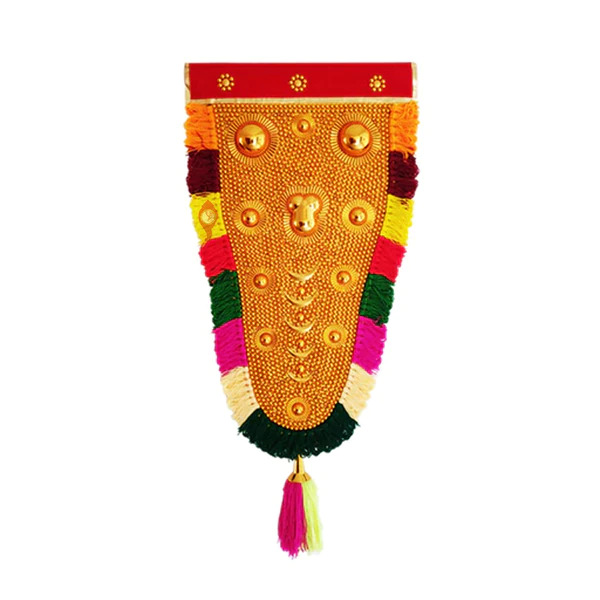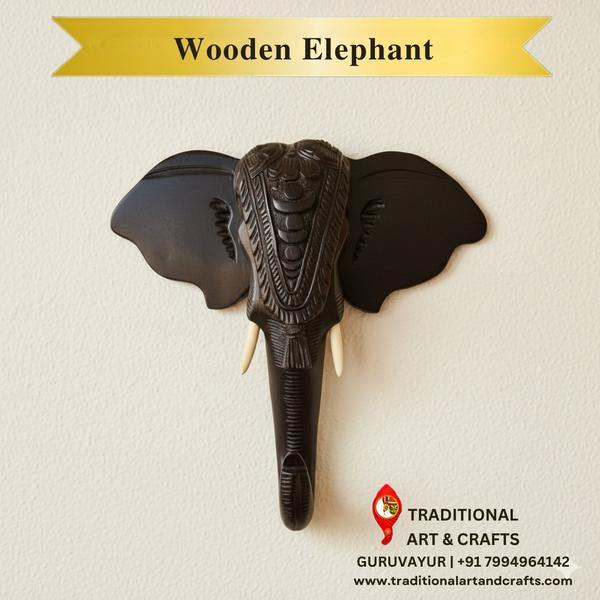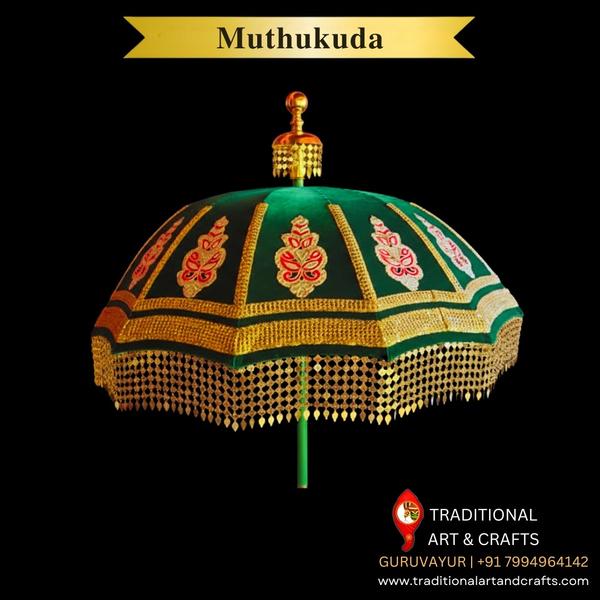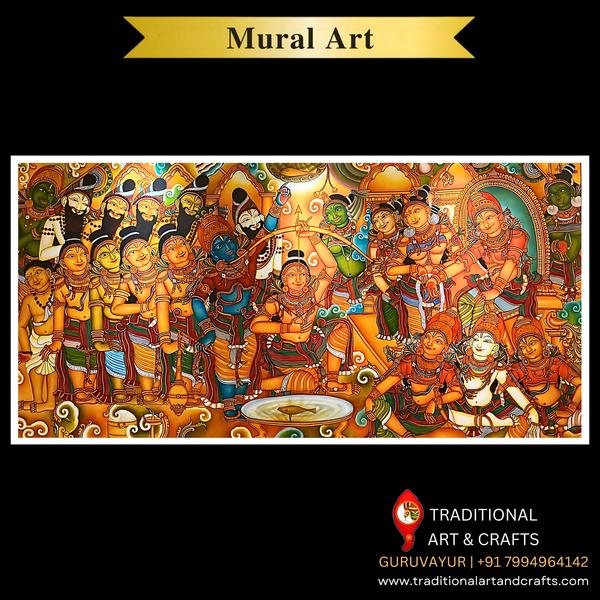
Nettipattam, also known as the elephant caparison, stands as a revered symbol deeply entrenched in the vibrant tapestry of South Indian culture, particularly in Kerala. Its origins can be traced back to the rich traditions of adorning elephants during festivals and ceremonial occasions.
Crafted with meticulous attention to detail, the Nettipattam holds profound significance beyond its ornamental allure. Each intricate design element is imbued with symbolism, representing various aspects of Hindu mythology and spirituality. From depictions of Lord Ganapati, the remover of obstacles, to the Navagraha, the nine celestial bodies governing human destinies, and the Trimoorths, the divine trinity of Brahma, Vishnu, and Shiva, every motif encapsulates the essence of revered deities and cosmic forces.
Moreover, the arrangement of these motifs is not arbitrary; rather, it adheres to precise principles dictating their count, size, and placement. Such meticulous design reflects a profound reverence for tradition and an unwavering dedication to preserving cultural heritage.
The Nettipattam also serves as a conduit for invoking blessings of prosperity and peace. It is believed that the presence of these divine symbols fosters an auspicious atmosphere, inviting the benevolent grace of the Hindu gods. The left side adorned with Goddess Lakshmi, the bestower of wealth and fortune, and the right side adorned with Goddess Saraswati, the embodiment of knowledge and wisdom, symbolizes the harmonious convergence of material abundance and spiritual enlightenment.
While traditionally adorning elephants during festivals, the evolution of Nettipattam has seen it transcend its original purpose. Today, these ornate masterpieces are not confined solely to ceremonial occasions but have found a new expression as cherished wall hangings. Serving as a testament to cultural reverence, these decorative pieces continue to evoke a sense of awe and admiration, enriching living spaces with their timeless elegance and profound symbolism.
However, despite its transformation into a decorative item, the reverence for Nettipattam remains undiminished. Careful preservation is paramount, with precautions taken to shield it from the harsh rays of the sun, ensuring that its lustrous shine endures for generations to come. In doing so, each Nettipattam becomes not just a symbol of cultural heritage but a cherished heirloom, embodying the enduring spirit of tradition and the timeless beauty of South Indian craftsmanship.
Keywords
sun
awe
size
sense
Shiva
motif
count
peace
detail
Brahma
Vishnu
wealth
Kerala
wisdom
essence
fortune
conduit
remover
origins
bestower
presence
lustrous
evolution
Navagraha
obstacles
left side
placement
testament
blessings
festivals
knowledge
elephants
harsh rays
depictions
Trimoorths
embodiment
admiration
right side
Hindu gods
prosperity
arrangement
precautions
generations
spirituality
living spaces
cosmic forces
Lord Ganapati
new expression
divine symbols
divine trinity
transformation
timeless beauty
The Nettipattam
human destinies
enduring spirit
Goddess Lakshmi
decorative item
Hindu mythology
various aspects
rich traditions
revered deities
benevolent grace
original purpose
vibrant tapestry
decorative pieces
timeless elegance
Goddess Saraswati
cultural heritage
ornamental allure
elephant caparison
cherished heirloom
profound symbolism
precise principles
profound reverence
material abundance
cultural reverence
ornate masterpieces
meticulous attention
Careful preservation
South Indian culture
ceremonial occasions
profound significance
unwavering dedication
nine celestial bodies
auspicious atmosphere
harmonious convergence
Such meticulous design
spiritual enlightenment
cherished wall hangings
intricate design element
South Indian craftsmanship




